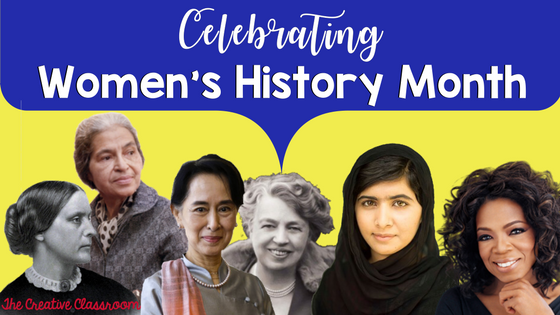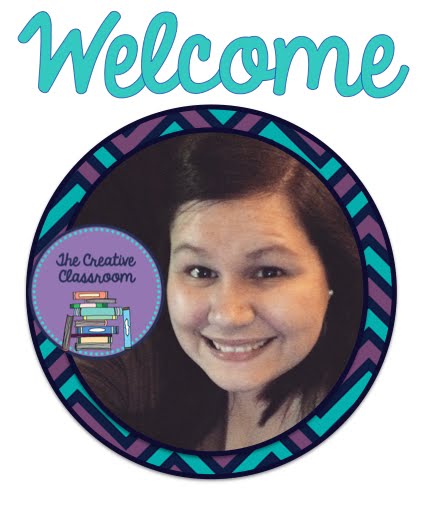Maya Angelou once said, “How important it is for use to recognize and celebrate our heroes and she-roes!” Since 1987, we have celebrated the immense contributions and achievements of women throughout the month of March. Women’s History Month is a chance to not only celebrate a diverse group of women but to also educate others, especially our students, on the impact that these women have had on the history of our country and society.
So how can you create meaningful opportunities for students to learn more about the roles and importance of women throughout March when you have a limited amount of time that you can devote in your classroom? It may seem like an impossible feat, but I can assure you that there are quite a few creative ways to balance the demands of your curriculum with celebrating Women’s History Month.
Create A Women's History Month Bulletin Board

This is the Women's History Month Interactive Bulletin Board that I created for my own classroom! If you'd like this kit to create your own bulletin board, click here.

Create a bulletin board in your classroom that contain images, quotes, or other important information about specific women. You could select a group of women that is specific to your subject matter like famous female authors in ELA or female scientist throughout history in your science classroom. Often times, I will use this bulletin board not only as a way to brighten up my classroom, but also as another learning opportunity for my students. One way that I do this is by including higher order thinking questions for each image or quote that is on the bulletin board. Students are given these questions on a handout and they have the entire month to complete this assignment. It makes a perfect early finishers activity or extension activity that gives students extra practice in a variety of skills like analysis, making connections, and other critical thinking skills.
Another idea would be to let your students create products for a Women's History Month bulletin board. This is the ultimate way to give your students ownership in their own learning. One option would be to have your students select one woman who inspires them or is important to them. Students will create a mini poster that includes a photo, brief biography, and a short explanation of why this woman inspires them. You can use these posters to create multiple bulletin boards that display students' work and will allow your students to learn about a variety of important women.
Bell Ringers = Pique Students’ Curiosity + Practice Critical Thinking Skills
Bell Ringers are a simple and effective way to not only pique students’ interest on a topic, but to also ensure that students are still practicing critical thinking skills while learning more about that topic. In my opinion, it is one of the most effective ways to introduce students to concepts and get them thinking about topics when your time is limited. In my classroom, I normally devote 8-10 minutes for a bell ringer activity. This includes time for students to answer questions and time for discussion.
During Women’s History Month, the bell ringers focus on a diverse group of women and a variety of higher order thinking questions. Each day my students are introduced to one woman. They learn about the her accomplishments through an infographic that contains a photo, background information and/or a quote. Students must use that information to answer a text-based higher order thinking question. When creating my bell ringers, I try to include a mixture of well-known women like Harriet Beecher Stowe or Rosa Parks and women that the majority of my students will not easily recognize like Indira Gandhi or Dr. Mary Walker. In addition, I also include a variety of questions that students must answer to give students multiple opportunities to practice a variety of skills. My favorite question types to include are inferences, making connections, analyzing quotes, and supporting a position/idea.
Each year I am constantly amazed at the responses and feedback that I get from my students. The level of student engagement during these bell ringers is astounding at times. There are moments that you could hear a pin drop, which is definitely not always the case in a middle school classroom. The level of engagement can also be seen through my students’ writing and class discussions. It’s always so refreshing and often times enlightening to hear my students’ perspectives on different quotes and accomplishments. I love the way they can view a situation or quote in a brand new way that I had never considered before.

If this sounds like something you would like to try out in your own classroom, I have created a small sampling of bell ringers that I have used in my own classroom. These bell ringers are also a part of a larger resource that is available in my store.
Click here to grab your FREE week’s worth of Women’s History Month Bell Ringers.
What are your favorite ways to celebrate Women's History Month in your classroom? Leave your suggestions in the comments below to win a Women's History Month product of your choice from my store!












































